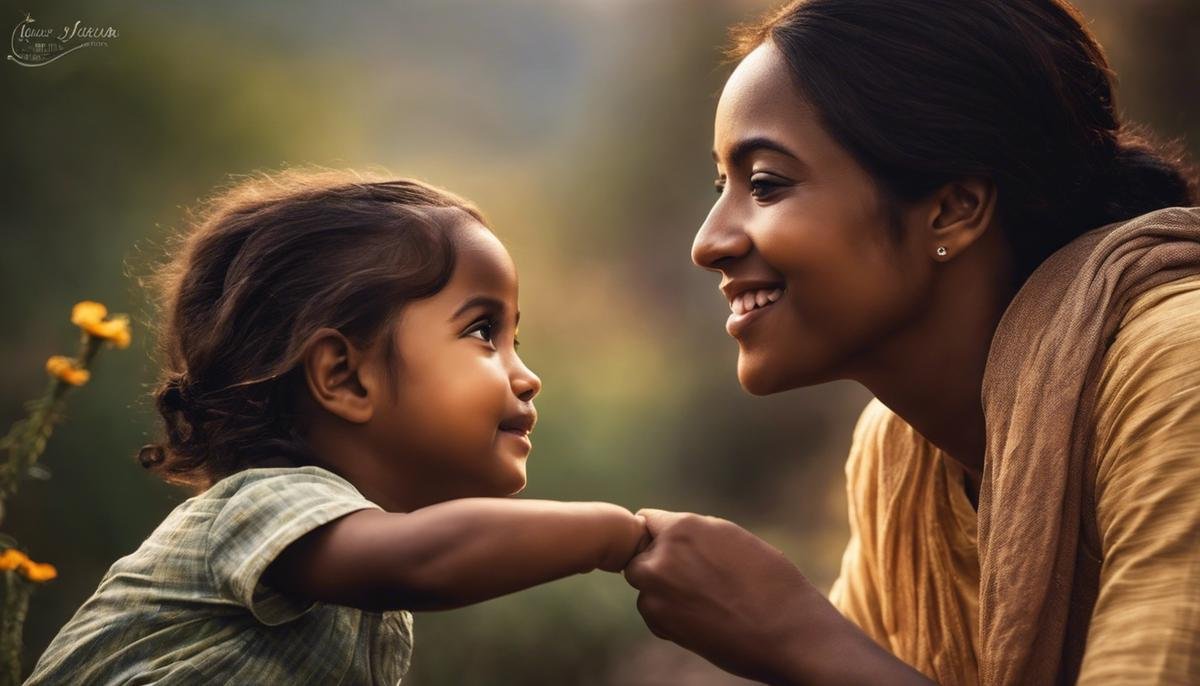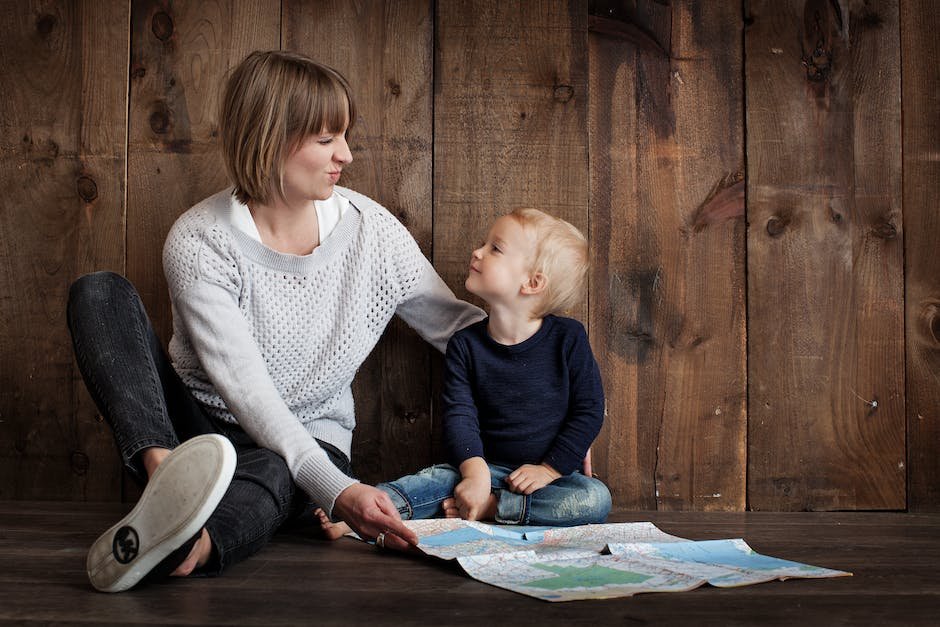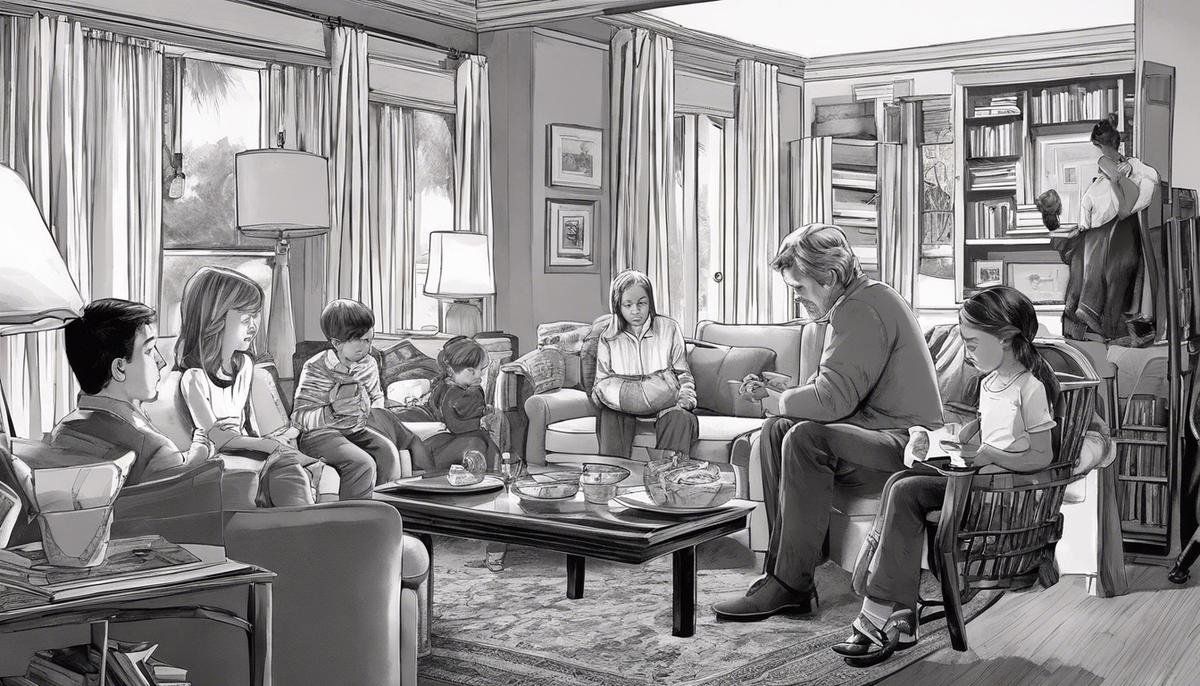
Across the whispered lullabies and the raucous family dinners, it is often the silent language of our gazes that weaves the most profound connections. The power of eye contact in forging emotional bonds is as old as humanity itself, yet remains a vibrant subject of interest as we navigate the intricate dance of social interactions. As we delve into the complexities of eye contact and nonverbal communication, we uncover a tapestry rich with cultural threads and developmental cues. This journey through the unspoken yet deeply felt world will not only enlighten us about the silent dialogues between parents and children but also arm us with the finesse to nurture these bonds as society sails into the digital horizon.
The Importance of Eye Contact in Bonding
The Magic of Eye Contact: Connecting Hearts in the Family
Hey, fellow parents and homemakers!
Let’s dive into something we do every day, probably without much thought: eye contact. It may seem simple, or even trivial, but did you know that this effortless act is a superpower when it comes to strengthening our family bonds? It’s true!
Eye contact is the unsung hero of non-verbal communication. It’s like a warm, invisible thread that connects two souls, saying, “I see you, I hear you, and you matter to me.” Picture this: the first gazing contest with a newborn. No words are needed, right? That’s where it all begins.
From infancy, eye contact is the building block of trust and attachment. It sets the tone for developing healthy relationships. And guess what? This isn’t just feel-good fluff! Science backs it up. Studies have shown that eye contact can release oxytocin, the “cuddle hormone,” which plays a crucial role in bonding and increases feelings of love and closeness.
In a world buzzing with distractions (hello, smartphones), maintaining eye contact is an art that seems to be fading. But it’s essential for emotional connection. When kids talk about their day or a partner shares a concern, locking eyes tells them, “You’re the most important person right now.” It’s a validation of their feelings and an affirmation of their importance in the family circle.
Eye contact during conversations encourages openness and honesty. It builds empathy and understanding as family members learn to read each other’s emotions and reactions. This can lead to stronger, deeper, and more meaningful connections.
It’s not just about the serious moments, though! Eye contact can be playful and fun. It can be a secret language shared between siblings during a family dinner or the knowing glance exchanged with a partner when your kiddo says something unexpected. These shared glimpses are the inside jokes that become cherished family memories.
So how can we harness the power of eye contact in everyday life? Practice active listening. When someone speaks, give them your full attention. Take a break from digital screens and have “eye contact moments.” Maybe it’s during meal times, family game nights, or right before bed during storytime. Most importantly, be patient and gentle with each other. Some family members might take longer to feel comfortable with extended eye contact, and that’s okay.
Remember, every glance, every shared look, and every focused gaze is an opportunity to reinforce the message: “We’re in this together.“
And there you have it, the magic of eye contact in a nutshell! Incorporate this little gem into your family’s routine and watch how those bonds of love and trust grow stronger every single day. Now go on, make today an eye-gazing day! Family connection is just a look away.

Eye Contact and Child Development
Unlocking Confidence and Communication: The Power of Eye Contact in Child Development
As we journey through the wonderful world of parenting and homemaking, there’s a simple yet profound tool that can uplift our little ones’ journey to full bloom—eye contact. At the very heart of parenting is the desire to nurture children who feel secure and valued, and believe it or not, the windows to our souls—our eyes—play a pivotal role in this process.
Ever notice how a child’s confidence seems to swell when they’re acknowledged with a warm, affirming gaze? That’s the magic of eye contact in action! When a little one is met with a look that says, “I see you, I hear you, I believe in you,” it sends a powerful message that bolsters their self-esteem. It’s like handing them an invisible crown, encouraging them to stand a little taller and speak a little clearer.
In the classroom or on the playground, children who are comfortable with eye contact often find it easier to engage with peers and educators. This isn’t just about looking someone in the eye; it’s about learning the art of non-verbal communication. With every shared glance, they’re deciphering social cues, understanding feelings, and responding appropriately. These skills are invaluable and set the stage for effective communication throughout life.
But wait—there’s more! Have you considered the link between eye contact and language development? It’s quite fascinating. When parents make eye contact with their babbling babies, they’re not just admiring those cute little faces. They are also signaling to their infants to keep going, keep trying, keep communicating. This encouragement can lead to richer verbal engagement, a broader vocabulary, and more complex sentences as children grow. They’re laying down the tracks for a lifelong love of learning and expression.
Now, in this tech-saturated age, eye contact is a gentle reminder that, even in a sea of screens, human connections reign supreme. It’s a call back to authenticity, where a look can say a thousand words, even to the youngest of hearts. By modeling this behavior, families send a clear signal to the next generation: “Be present, be mindful, and value the person right in front of you.”
So, as the sun sets on another day filled with the joyful chaos of family life, let’s not forget this simple gift we can give to our children. A look in the eye is more than just a moment of connection; it’s a stepping-stone towards a world of confidence, communication, and heartfelt expressions that words alone cannot capture. Together, every little glance can help shape big futures—watching, after all, is the first step in learning how to soar.

Eye Contact in Different Cultures
Alright, now let’s dive into a topic that’s equally fascinating and complex: the cultural variations in eye contact norms.
Admittedly, what we’ve discussed so far works well within a certain context—one that is quite common in Western cultures. However, the story of eye contact takes some unexpected turns when we explore the globe. This nuance is crucial to understand, especially in our multicultural neighborhoods, schools, and workplaces, as well as during international travels with the family.
Let’s begin with the fact that not all cultures view eye contact as the golden standard for showing attention and respect. In fact, in some Asian and African cultures, extended direct eye contact might be perceived as confrontational or disrespectful, especially when it occurs between individuals of different social hierarchy or age. For example, in Japanese society, it’s often more respectful to maintain occasional eye contact rather than a steady gaze during a conversation, particularly with someone in a position of authority.
In contrast, in Middle Eastern cultures, eye contact can have multiple layers of meaning. It can signify interest, respect, and attentiveness, but it’s also bound by gender and familial roles. Direct eye contact between men and women who are not closely related can be seen as inappropriate, urging us to be mindful and considerate about such nuances.
Latin American cultures have their unique take on eye contact, where its use often depends on the situation and relationships. It’s generally acceptable and expected to maintain steady eye contact to show engagement and sincerity, but there are instances, much like in Asian cultures, where too much eye contact can be interpreted as a challenge to authority.
In the Western context, particularly in the United States, direct eye contact signals confidence, honesty, and forthrightness. It’s often taught from a young age and is seen as a cornerstone of effective communication—something we tend to emphasize within our families and teach our kids.
Understanding these cultural variations is essential. Teaching our children to appreciate eye contact as part of a broader spectrum of social cues and non-verbal language can prepare them for a world where emotional intelligence and cultural sensitivity are priceless skills. It’s about equipping them to be world citizens who can connect with anyone, from anywhere.
So the next time the family gears up for a trip abroad or prepares to meet people from different cultural backgrounds, it’s beneficial to have a chat about eye contact norms and what they signify in different parts of the world. This understanding is a key ingredient in the melting pot of global human connection—a pot we stir daily, one gaze at a time.

Improving Nonverbal Communication Skills
Fostering Better Family Connections: Beyond Eye Contact
When families think about nonverbal communication, eye contact often takes center stage, but there’s a symphony of unspoken cues we can harness to strengthen our connections with our loved ones. Let’s dive into the other pieces of the nonverbal puzzle that, alongside eye contact, create a rich tapestry of family communication.
Touch is a powerful nonverbal tool. A warm hug, a reassuring pat on the back, or a gentle squeeze of the hand can convey a multitude of emotions and reinforcements that words sometimes cannot. Physical touch is particularly impactful in parental relationships, where a simple touch can offer comfort, security, and a sense of belonging.
Facial expressions are a window into our emotions, and being attuned to our family members’ facial cues can help us respond appropriately to their needs and emotions. A smile can be infectious and is often all it takes to brighten up someone’s day, while a furrowed brow might signal the need for a conversation.
Another aspect of nonverbal communication lies in our body language. Open and relaxed postures invite interaction and show that we are engaged and present. Conversely, crossed arms or a slouched posture might inadvertently communicate disinterest or discomfort.
The importance of creating a family space that encourages open nonverbal dialogue cannot be overstated. This can be achieved by establishing no-tech zones or tech-free times where family members can interact unencumbered by screens, allowing for full-body communication.
Family activities like dancing or sports offer an opportunity to develop nonverbal rapport. Through coordinated movement, families can experience teamwork and nonverbal negotiation, learning to read each other’s cues on a whole new level.
Sharing a creative space also encourages nonverbal harmony. Engaging in activities such as art or music projects allows for expression beyond words, fostering a shared understanding and appreciation of each member’s unique forms of expression.
The way we physically arrange our home environment also influences nonverbal interactions. Cozy, communal settings that encourage gathering and casual interaction are conducive to more spontaneous nonverbal exchanges compared to formal, separate spaces.
Remember that every family is different, and members will have varying levels of comfort with different nonverbal cues. Inclusivity means embracing these differences and encouraging all forms of expression. It’s essential to respect everyone’s personal space and understand boundaries while still promoting a sense of physical closeness and emotional support.
Consistency in nonverbal behaviors is key to establishing a stable communication environment. When a family’s nonverbal language is unpredictable, this can create confusion or a sense of insecurity. Conversely, consistent nonverbal cues foster an atmosphere of reliability and safety.
The elegance of nonverbal communication lies in its simplicity and universality. It allows families to connect on a fundamental level, crossing age gaps and breaking through barriers of verbal articulation. By being mindful and intentional in embracing these nonverbal cues, families can create a deeper sense of connection, trust, and affection that can last a lifetime.

The Impact of Technology on Eye Contact
In an era where screens often dominate our visual landscape, many wonder how these changes are shaping the interactions within our own households, particularly concerning nonverbal cues like eye contact. As advocates for strengthening family connections, addressing the influence of technology on these fundamental human interactions is indeed vital.
Screens can become barriers to nonverbal communication. Handheld devices, televisions, and computers demand attention that might otherwise be reserved for family members. This frequent diversion of gaze has the potential to disrupt the subtle dance of nonverbal cues that are integral to family bonds, including those silent exchanges of love, concern, humor, and support that take place within the windows of the soul – our eyes.
When families sit together, with the glow of devices lighting each face, the opportunity for spontaneous eye contact diminishes. What is lost in these moments is the chance for an encouraging nod, a sympathetic glance, or a wink of complicity that says “I understand.” It is in these small exchanges that we find the pillars of familial relationships, nurturing a shared sense of belonging and understanding.
To counteract this trend, it becomes necessary to consciously carve out screen-free zones and times. Family meals can transform into tech-free territories, paving the way for open communication. Engaging in activities that don’t involve screens, such as board games, outdoor adventures, or simply storytelling sessions, can remind everyone of the joy found in each other’s company beyond the digital realm.
Moreover, acknowledging the generational divide is imperative. Younger family members are often digital natives, and navigating eye contact can be more challenging for those who have grown up in an age of emojis and text messages. Encouraging gentle, natural exchanges of eye contact can help children and teens develop crucial social skills that extend beyond the family unit into every arena of life.
It is also worth noting that the rise in remote communication platforms, a necessity in today’s global and pandemic-impacted society, adds complexity to nonverbal communication. Video calls do allow for some degree of eye contact, but it’s a mediated experience that lacks many nuances of in-person interactions. It’s crucial to be mindful of this and prioritize in-person connections whenever possible, so that family members experience the full spectrum of communicative signals.
In addressing these challenges, the role of parents and caregivers is twofold. Firstly, to model the kind of eye-to-eye engagement that fosters deep emotional connections. And secondly, to create and protect spaces within the home where technology takes a backseat, and the eyes have a chance to speak volumes without interference.
While technology presents obstacles to traditional nonverbal cues like eye contact, it also offers opportunities — to adapt our communications, to be more proactive in our relationships, and to teach the next generation the timeless value of looking someone in the eyes. By being aware and intentional, families can navigate the digital landscape without losing sight of the power and significance of the simplest human connections.

As we retreat from the intimate world of eye contact and nonverbal cues, let us carry with us the understanding that these wordless exchanges hold immense power. The knowledge we have traversed transcends mere academic intrigue; it is a guide for nurturing connections, honoring cultural intricacies, and embracing the evolving digital landscape with open hearts and attentive eyes. Let the insights simmer within our daily interactions, for in the end, it is through the silent language of our glances and gestures that we speak volumes of our love, respect, and humanity to our cherished ones.




